Guides
How to Fix a Blocked Toilet
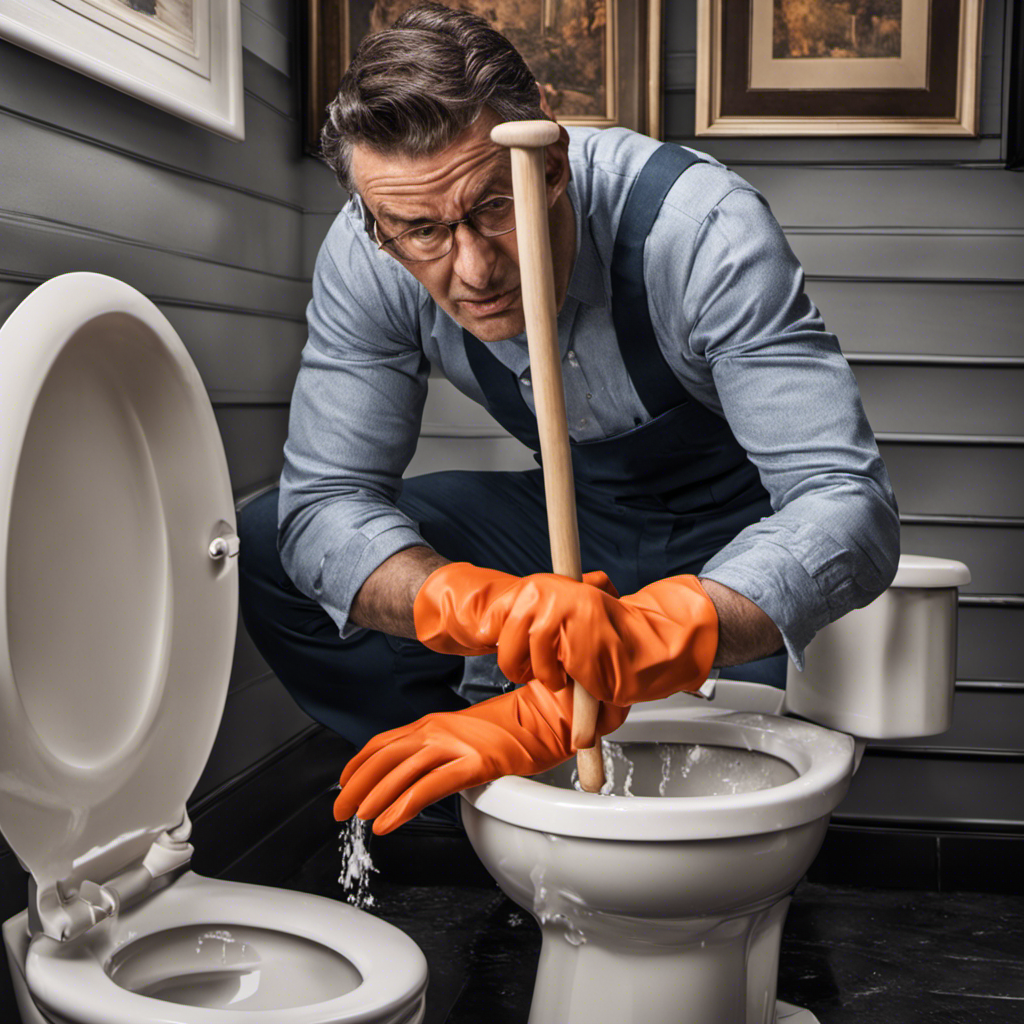
Have you ever been faced with the frustrating problem of a blocked toilet? Well, fear not! I’m here to guide you through the process of fixing it yourself.
In this article, I will share essential tools, step-by-step instructions, and effective techniques for unclogging your toilet. By the end, you’ll have the knowledge and confidence to tackle this common household issue.
So, let’s dive in and get your toilet back to its pristine state!
Key Takeaways
- Improper disposal of waste and non-flushable items is a common cause of toilet blockages.
- Essential tools for unclogging a toilet include a plunger and bucket, and prevention is important through mindful flushing and regular maintenance.
- A step-by-step guide can help in clearing a blocked toilet, and calling for emergency plumber services may be necessary for severe blockages.
- Techniques for dislodging stubborn blockages include using a toilet auger or plumbing snake, utilizing plunging techniques, and trying chemical solutions or homemade mixtures.
Understanding the Common Causes of Toilet Blockages
You may be wondering, ‘What are the common causes of toilet blockages?’
Toilet blockages can occur due to a variety of reasons, but the most common cause is the improper disposal of waste and non-flushable items. People often flush items like sanitary napkins, wipes, or excessive amounts of toilet paper, which can lead to clogs in the pipes.
Another cause of blockages is the buildup of mineral deposits and sediment in the pipes over time. These deposits can restrict the flow of water and eventually cause a blockage.
Signs of a blocked toilet include slow draining, gurgling sounds, and water rising to the brim when flushed. Understanding the common causes of toilet blockages is essential for effective toilet blockage prevention.
Now, let’s move on to the essential tools and materials for unclogging a toilet.
Essential Tools and Materials for Unclogging a Toilet
To unclog a toilet, you’ll need a plunger and a bucket. These essential tools will help you tackle the job effectively.
However, it’s important to note that prevention is always better than cure when it comes to toilet blockages. To avoid the hassle of unclogging, there are a few simple steps you can take.
Firstly, be mindful of what you flush down the toilet. Avoid flushing items such as wet wipes, cotton balls, or excessive toilet paper.
Secondly, regular maintenance is key. Use a toilet brush to clean the inside of the bowl and remove any buildup that could lead to blockages.
Finally, consider eco-friendly unclogging methods. Instead of using harsh chemicals, try using a mixture of hot water and dish soap or a combination of baking soda and vinegar. These methods are not only effective, but also environmentally friendly.
Step-by-Step Guide to Clearing a Blocked Toilet
First, gather the necessary tools such as a plunger and a bucket to clear the blockage in your toilet.
Toilet blockages can be a common problem, but with the right tools and a little know-how, you can fix it yourself.
Before you begin, it’s important to understand some preventative measures to avoid future blockages. Avoid flushing large amounts of toilet paper at once, as this can clog the pipes. Also, refrain from flushing items like sanitary products, baby wipes, or paper towels, as these can cause blockages as well.
If the blockage is severe and you are unable to clear it yourself, it may be time to call for emergency plumber services. They have the expertise and equipment to resolve more complex blockages.
Effective Techniques for Dislodging Stubborn Blockages
When confronted with a stubborn blockage, it’s essential to try using a toilet auger to dislodge the obstruction. This specialized tool, also known as a plumbing snake, is specifically designed to navigate through the curves of the toilet’s drain and break apart or remove any clogs in its path. By inserting the auger into the toilet bowl and turning the handle in a clockwise motion, you can effectively break up the blockage and restore proper flow.
To further aid in the removal of stubborn blockages, consider employing the following techniques:
-
Utilize plunging techniques: Using a toilet plunger with a flange, create a tight seal around the drain and vigorously plunge up and down to create suction and dislodge the obstruction.
-
Try chemical solutions: Certain chemical drain cleaners or homemade mixtures can be poured into the toilet bowl to dissolve or break down the blockage. Follow the instructions carefully and allow the solution to sit for the recommended amount of time before flushing.
Preventing Future Toilet Blockages: Maintenance Tips and Tricks
Regularly maintaining your toilet by performing simple tasks like cleaning the bowl and checking the water flow can help prevent future blockages. Toilet blockages can be a major inconvenience and can lead to costly repairs.
To prevent these issues, it is important to follow some best practices. Firstly, make sure to clean the toilet bowl regularly using a toilet brush and a mild cleaner. This will help remove any buildup that could potentially cause blockages.
Secondly, check the water flow in your toilet. If you notice slow draining or weak flushing, it could be a sign of a blockage forming.
Finally, avoid flushing items that are not meant to be flushed, such as wipes, feminine products, or excessive toilet paper.
Frequently Asked Questions
Can I Use Chemical Drain Cleaners to Unclog My Toilet?
Yes, you can use chemical drain cleaners to unclog your toilet. However, there are alternative solutions that can be more effective and less harmful to your plumbing system.
How Do I Know if the Blockage Is Located in the Toilet Bowl or in the Drain Pipe?
When dealing with a clogged toilet, it’s important to determine if the blockage is in the bowl or the drain pipe. Look for signs such as slow drainage or water backing up to pinpoint the source.
Is It Safe to Use a Plunger if the Toilet Is Completely Clogged?
Yes, it is safe to use a plunger if the toilet is completely clogged. However, if you’re looking for plunger alternatives or concerned about potential dangers, there are other methods to unclog a toilet.
What Should I Do if the Water Level in the Toilet Bowl Keeps Rising After Flushing?
If the water level in the toilet bowl keeps rising after flushing, turn off the water supply valve behind the toilet. This will prevent toilet bowl overflow. Then, call a professional plumber for assistance.
Can Flushing Too Much Toilet Paper Cause a Blockage?
Yes, flushing too much toilet paper can cause a blockage. It’s important to use toilet paper alternatives like wet wipes or bidets to prevent this. Other causes of toilet blockages include foreign objects and excessive waste.
Conclusion
In conclusion, mastering the art of unclogging a blocked toilet is like unraveling a perplexing puzzle. Armed with a trusty plunger and a dash of determination, I have emerged victorious against the forces of clogged pipes.
By understanding the common causes of toilet blockages and employing effective techniques, I have triumphed over stubborn blockages and restored the flow of tranquility to my bathroom sanctuary.
Remember, prevention is key – embrace the maintenance tips and tricks to ensure a future free from the clutches of toilet blockages.
Happy plunging!
Liam’s journey with us started as a consumer. Having faced challenges while setting up his own modern bathroom, he delved deep into research.
Recognizing his knack for simplifying complex information and his authentic writing style, we were thrilled to welcome him aboard. Liam’s articles often merge practicality with style, ensuring readers find the perfect fit for their homes. Liam is an avid hiker off-duty and often jokes about finding the best “natural toilets” Mother Earth has to offer.
Guides
How Can I Make My Dogs Poop Break Down Faster
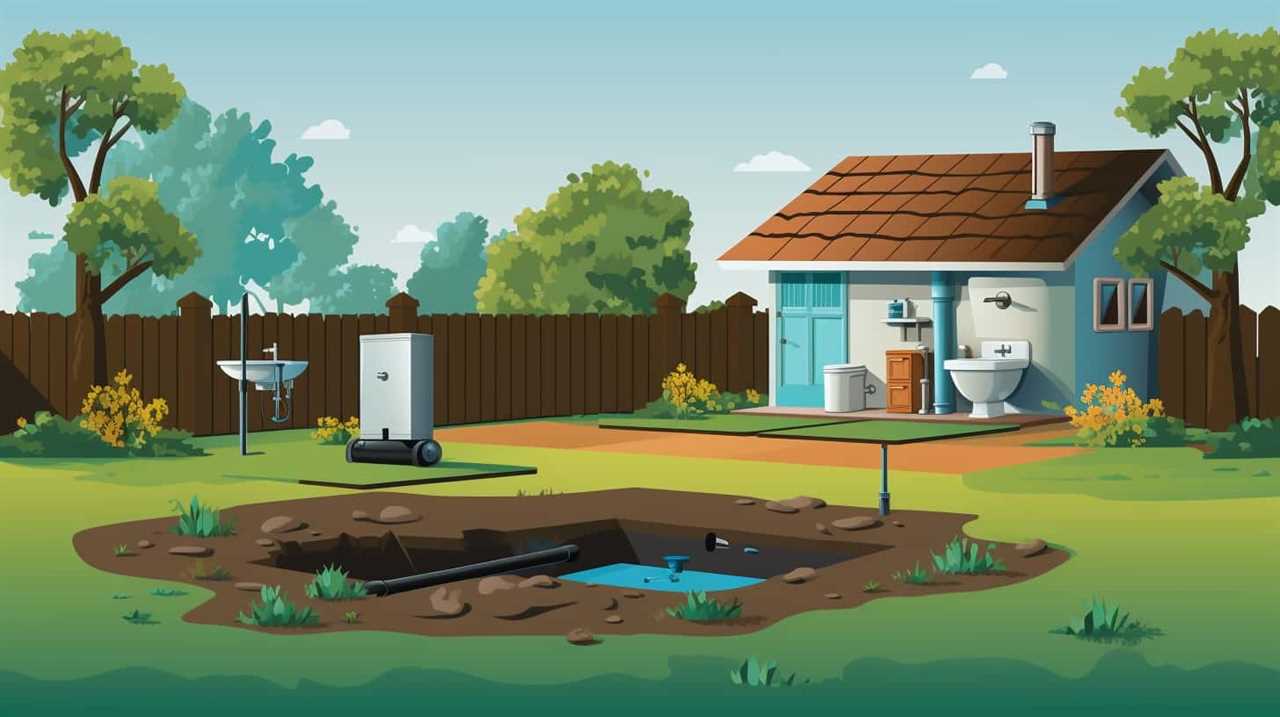
Are you aware that the average dog generates around 275 pounds of feces annually?
Finding ways to make this waste break down faster is essential for maintaining a clean and healthy environment. In this article, we will explore effective methods to speed up the decomposition of your dog’s poop.
By selecting the right diet, providing ample water, utilizing natural additives, and implementing proper yard maintenance techniques, you can ensure that your furry friend’s waste is disposed of more efficiently.
Key Takeaways
- A balanced and nutritious diet is crucial for proper digestion and faster breakdown of dog’s poop.
- Providing plenty of fresh water and encouraging hydration aids in digestion and regular bowel movements.
- Natural additives, such as enzymes, can speed up the decomposition of dog waste and make it easier to break down.
- Regularly cleaning and aerating the yard, along with considering composting methods, can effectively manage and repurpose dog waste.
Choose the Right Diet for Your Dog
To ensure optimal digestion and faster breakdown of your dogs’ poop, we should focus on choosing the right diet for them.
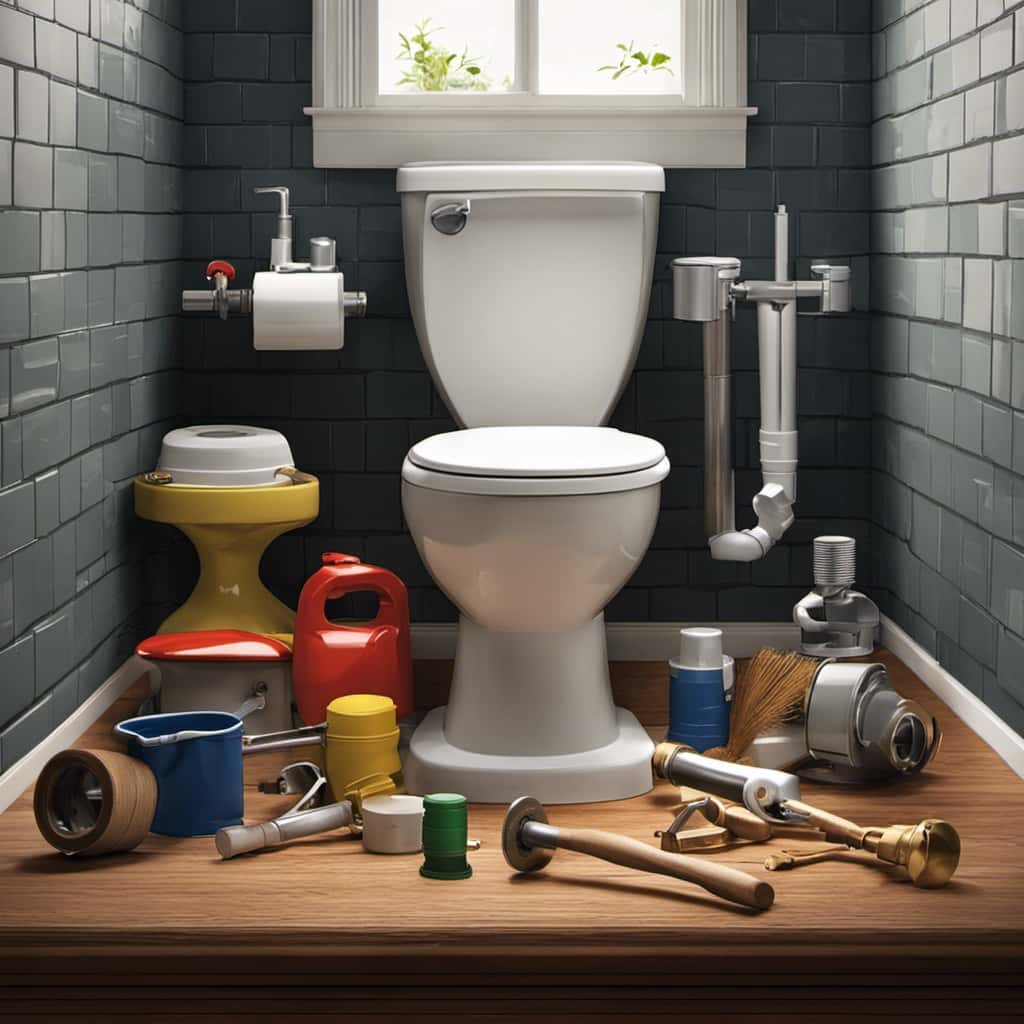
Dog nutrition plays a crucial role in their overall health and the quality of their poop. A balanced and nutritious diet is essential for proper digestion and nutrient absorption.
When selecting food for your dog, it’s important to consider their specific dietary needs based on factors such as age, breed, and activity level. High-quality dog food that contains a proper balance of proteins, carbohydrates, fats, vitamins, and minerals is recommended.
Additionally, dietary supplements can be beneficial in supporting your dog’s digestion and overall well-being. Consult with your veterinarian to determine which supplements are appropriate for your dog’s specific needs.
Remember that a well-balanced diet is key to ensuring optimal digestion and a faster breakdown of your dogs’ poop.
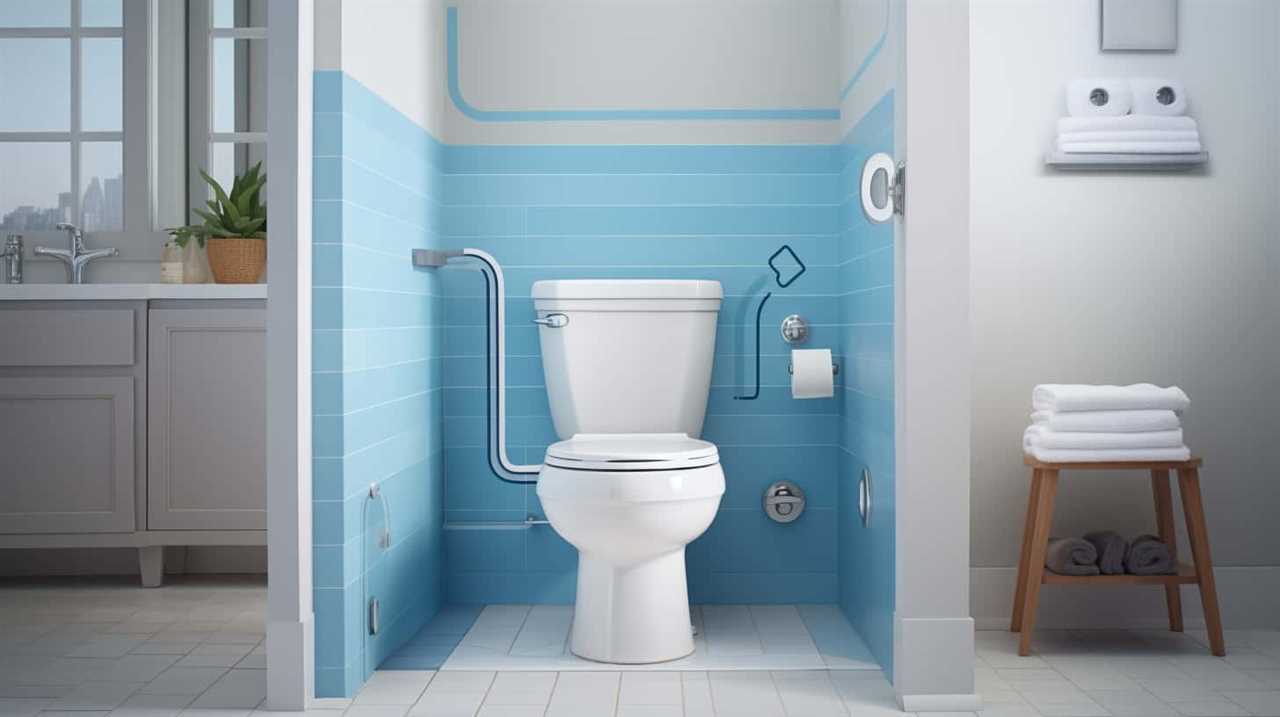
Provide Plenty of Water for Digestion
We should ensure that we provide an ample amount of water for our dogs’ digestion to promote optimal breakdown of their poop. Water plays a crucial role in promoting healthy gut bacteria and aiding in the digestion process.
Here are some key points to consider when providing water for your dog:
- Hydration: Make sure your dog has access to fresh, clean water at all times.
- Daily intake: Monitor your dog’s water intake and ensure they’re drinking enough to stay properly hydrated.
- Mealtime: Encourage your dog to drink water before and after meals to aid in the digestion process.
- Exercise routine: Incorporate a proper exercise routine to promote healthy digestion and encourage regular bowel movements.
Utilize Natural Additives to Speed up Decomposition
For faster decomposition of your dogs’ poop, incorporating natural additives into their diet is an effective approach. Using enzymes, bacteria, and microorganisms to aid decomposition can help break down the waste more quickly and efficiently.
Enzymes, such as cellulase and protease, can break down the complex organic compounds in the feces, making it easier for bacteria and microorganisms to decompose them. These natural additives can be found in certain pet foods or can be added as supplements to their diet.
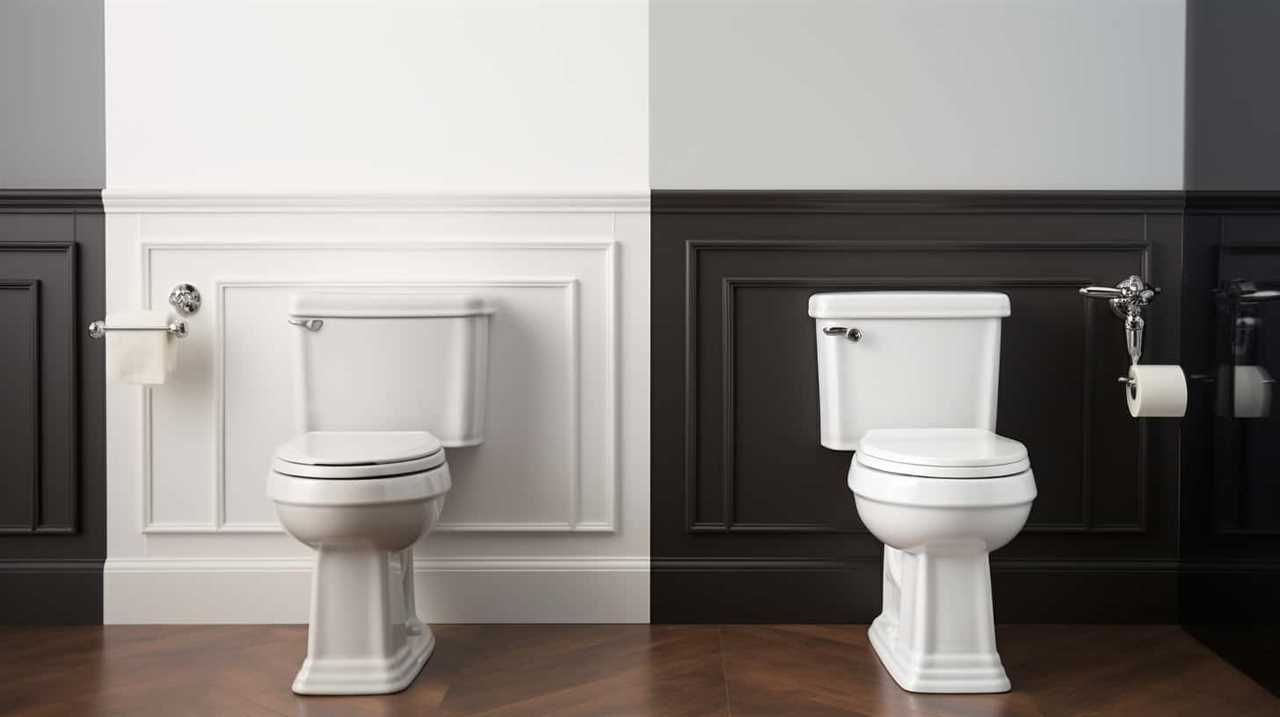
Additionally, the benefits of adding organic matter to the soil shouldn’t be overlooked. When the decomposed waste is used as fertilizer, it enriches the soil with nutrients, improves its structure, and promotes healthy plant growth.
Regularly Clean and Aerate Your Yard
Cleaning and aerating our yard regularly is essential for ensuring the efficient breakdown of our dogs’ poop. Proper lawn maintenance and pet waste management are crucial for maintaining a healthy and hygienic outdoor space.
Here are some key practices to follow:
- Remove any visible pet waste from the yard using a poop scoop or disposable bags.
- Regularly hose down the area where the waste was located to dilute any remaining residue.
- Aerate the soil by using a garden fork or aerator to create small holes. This allows for better oxygen flow and promotes the breakdown of organic matter.
- Consider using a natural enzymatic cleaner specifically designed for pet waste to further break down and eliminate any lingering odors.
Consider Using Composting Methods for Dog Waste
To enhance the breakdown process of our dogs’ poop, considering composting methods is a viable option. Composting dog waste not only helps to reduce the amount of waste that ends up in landfills but also provides a sustainable way to repurpose it as fertilizer.
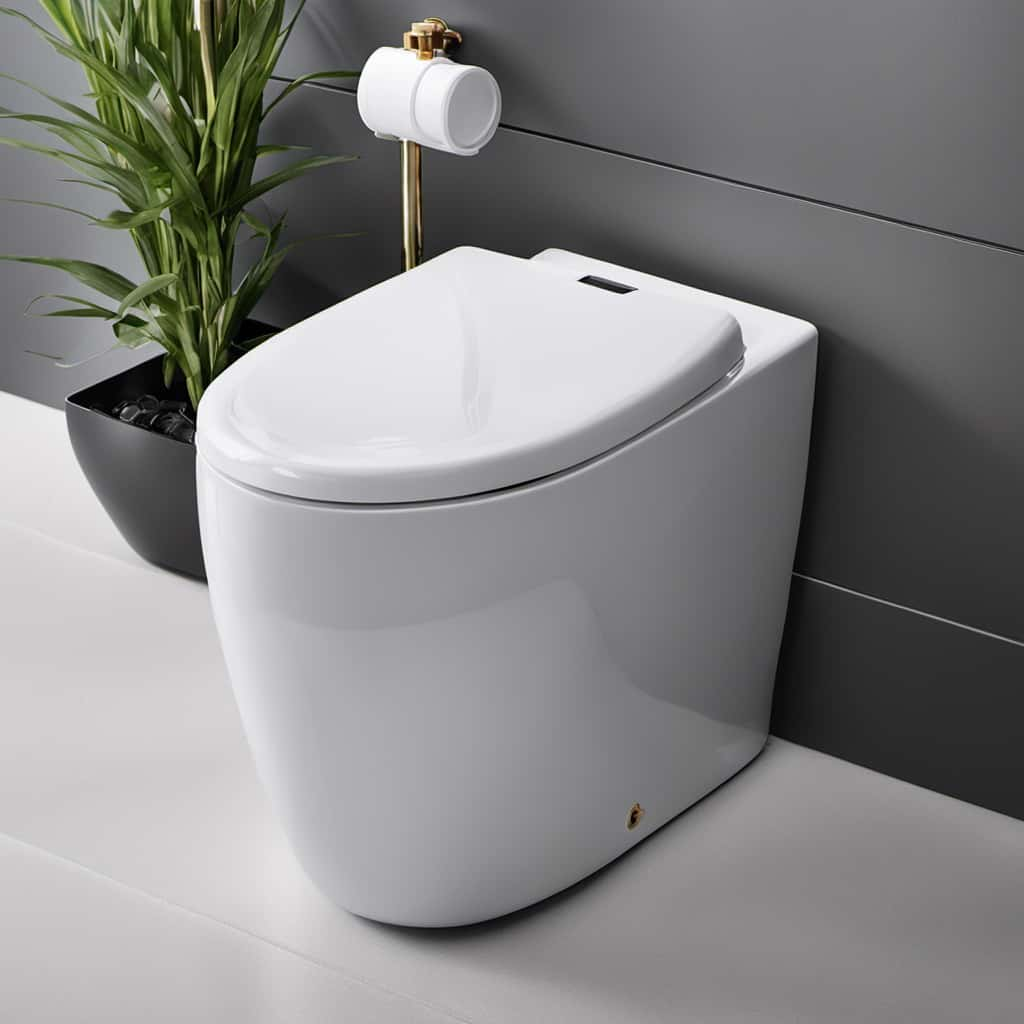
By creating a dog waste compost bin, you can effectively convert the waste into nutrient-rich compost that can be used in your garden or yard. To create a dog waste compost bin, choose a suitable location away from water sources and food crops.
Line the bin with a layer of straw or wood chips, and then add the dog waste, ensuring you mix it with other organic materials like grass clippings or leaves. Regularly turn the compost pile to provide oxygen and promote decomposition.
With time, the composting process will break down the dog waste, transforming it into a safe and natural fertilizer for your plants.
Frequently Asked Questions
How Often Should I Feed My Dog to Ensure Efficient Digestion and Quicker Poop Breakdown?
To ensure efficient digestion and quicker poop breakdown, we should consider the feeding frequency and types of dog food. By feeding our dogs the right amount of food at regular intervals, we promote proper digestion and help the poop break down faster.

Can I Use Artificial Additives or Enzymes to Speed up the Decomposition Process?
Yes, you can use artificial additives or natural enzymes to speed up poop breakdown. However, we recommend natural enzymes as they are safer and more effective, without the potential drawbacks of artificial additives.
Are There Any Specific Plants or Herbs That Can Aid in Breaking Down Dog Poop?
Specific plants or herbs that aid in breaking down dog poop naturally and speeding up decomposition include yarrow, comfrey, and horsetail. These natural remedies can help promote the breakdown of waste in an environmentally friendly way.
How Can I Prevent Odor and Flies in My Yard While Waiting for the Poop to Break Down?
To prevent odor and flies in our yard while waiting for poop to break down, we can use natural repellents and practice proper waste management. This will help maintain a clean and hygienic environment.
Is It Safe to Use Compost Made From Dog Waste on My Garden or Plants?
Using dog waste compost safely requires caution. Alternative methods for dog waste disposal include burying it in a designated area or using a dog waste collection service. These options minimize health risks and environmental impact.
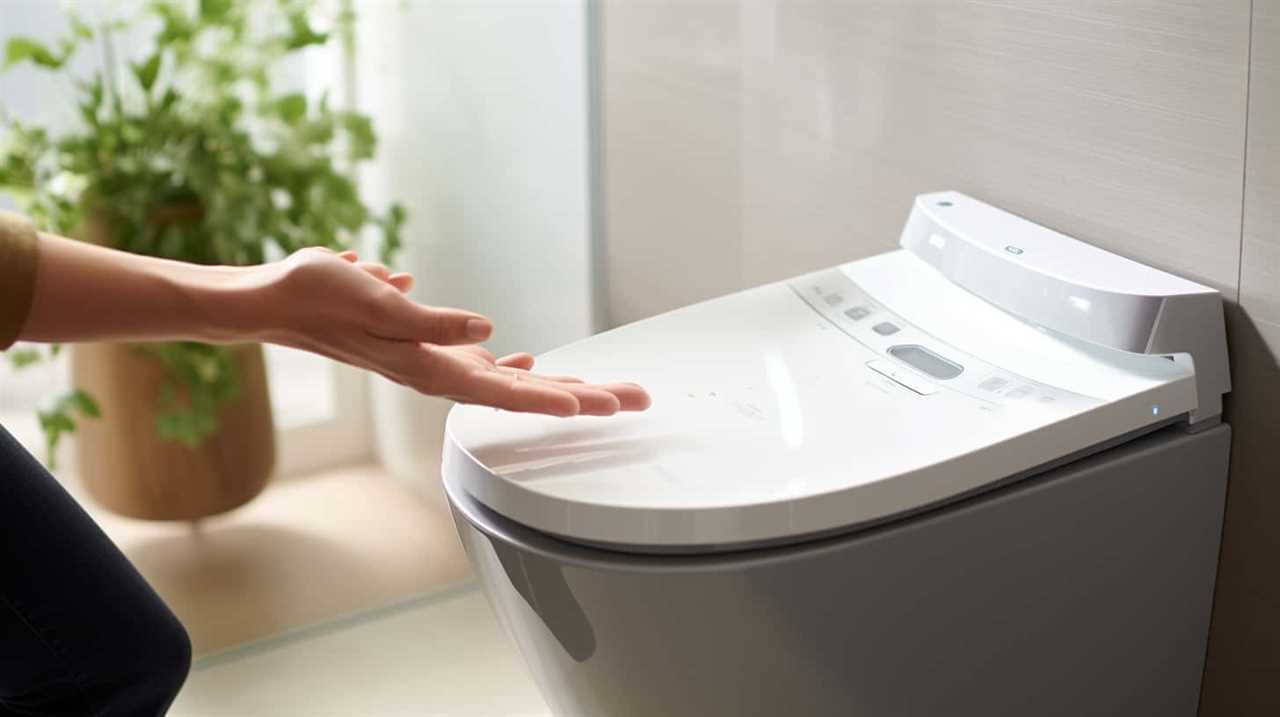
Conclusion
In conclusion, there are several ways to help speed up the decomposition of your dog’s poop:
- Choosing the right diet: Providing your dog with a balanced diet that is rich in fiber can help promote healthy digestion and make their waste easier to break down.
- Providing ample water: Keeping your dog hydrated is important for their overall health and can also help soften their poop, making it easier to decompose.
- Utilizing natural additives: Adding natural additives to your dog’s diet, such as pumpkin or probiotics, can help regulate their digestive system and promote efficient waste breakdown.
- Maintaining a clean yard: Regularly picking up your dog’s poop and keeping your yard clean can prevent the accumulation of waste, allowing for faster decomposition.
- Considering composting methods: If you have the space and resources, composting your dog’s waste can further aid in the breakdown process and help create nutrient-rich soil.
It’s important to prioritize the health and well-being of your furry friend, so consulting with a veterinarian for specific dietary and waste management recommendations is always recommended.
Together, we can create a cleaner and healthier environment for both our dogs and ourselves.
With an impeccable eye for detail and a passion for bathroom-related, Ava leads our editorial team gracefully and precisely.
Under her guidance, Best Modern Toilet has flourished as the go-to resource for modern bathroom enthusiasts. In her free time, you might find Ava exploring antique shops and looking for vintage bathroom fixtures to add to her collection.
Guides
Can You Flush the Toilet With a Bucket of Water

We’ve all experienced it – that dreaded moment when the toilet refuses to flush. Have no fear, we have a clever solution that could come to the rescue.
Wondering if you can flush the toilet with a bucket of water? The answer is yes!
In this article, we’ll show you the step-by-step process of how to effectively flush your toilet using a bucket of water.
So get ready to master this handy technique and never be caught without a working toilet again.

Key Takeaways
- Using a sturdy bucket with a capacity of 2-3 gallons is effective for flushing with a bucket of water.
- Access to a clean and reliable water source is necessary for utilizing alternative flushing methods.
- Removing the toilet tank lid is an important step in exploring water-saving potential and using alternative flushing methods.
- If the bucket of water method doesn’t work, a plunger can help remove clogs or blockages.
Gathering the Necessary Materials
To begin, we’ll gather the necessary materials for flushing the toilet with a bucket of water. When it comes to utilizing alternative water sources, having the right tools is crucial. Firstly, you’ll need a sturdy bucket with a capacity of at least 2-3 gallons to ensure an effective flush.
Additionally, it’s important to have access to a reliable water source, such as a nearby pond or rainwater collection system. Ensure that the water is clean and free from contaminants to avoid any potential health risks.
Troubleshooting common issues may arise, such as a weak flush or inadequate water volume. In such cases, check for any blockages in the toilet bowl or the water supply line. Adjusting the amount of water poured into the bowl may also resolve these issues.
Removing the Toilet Tank Lid
Now that we’ve gathered the necessary materials, let’s remove the toilet tank lid to continue the process of flushing the toilet with a bucket of water.

Removing the toilet tank lid is an important step in using alternative methods for flushing toilets and exploring the water-saving potential of bucket flushing.
To remove the lid, locate the two screws or bolts on the top of the tank. These are usually positioned at the back of the tank, near the wall.
Use a screwdriver or an adjustable wrench to loosen and remove the screws or bolts. Once they’re removed, carefully lift the lid off the tank and set it aside. Be cautious not to drop or damage the lid during this process.
With the lid removed, we’re now ready to proceed to the next step in the bucket flushing process.
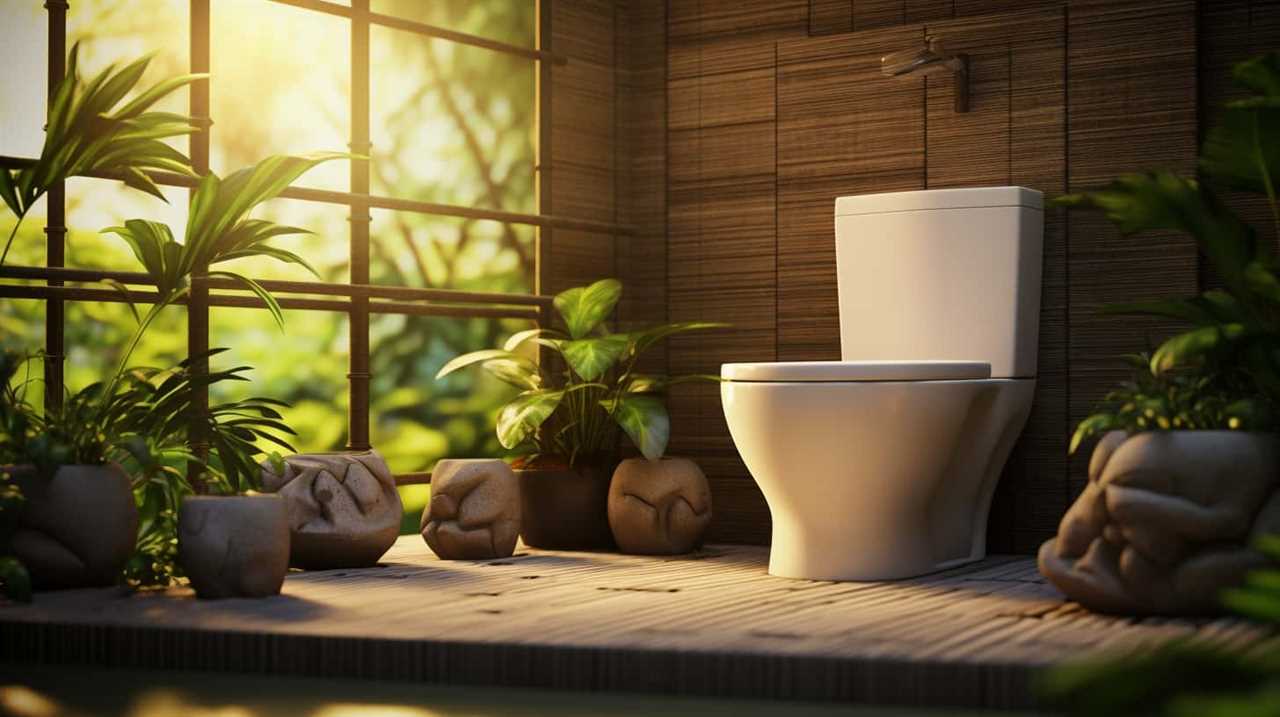
Pouring the Bucket of Water Into the Bowl
After removing the toilet tank lid, we can now proceed to pour the bucket of water into the bowl.
This alternative method of flushing toilets is an effective way to conserve water. By using a bucket of water, we can avoid using the traditional flushing mechanism, which typically requires a significant amount of water.
Pouring the water directly into the bowl creates enough force to flush away waste and maintain cleanliness. This method is especially useful in situations where water supply is limited or during periods of water scarcity.
It’s a simple yet practical solution that promotes water conservation. By exploring alternative ways to flush toilets, we can contribute to sustainable practices and reduce our environmental impact.

Using a Plunger if Necessary
If the bucket of water method doesn’t successfully flush the toilet, we can use a plunger to help remove any clogs or blockages. A plunger is a simple tool that creates suction to dislodge any debris obstructing the flow of water.
Here are some troubleshooting tips to effectively use a plunger:
- Ensure a proper seal: Place the plunger over the drain hole, making sure it covers the entire opening. This will allow optimal suction to be created.
- Apply forceful plunging: Push down firmly on the plunger, then pull up quickly. Repeat this motion several times to create enough pressure to dislodge the blockage.
- Use water as lubrication: Adding some water to the toilet bowl can help create a better seal and facilitate the plunging process.
Repeating the Process if Needed
We can repeat the process if necessary by using another bucket of water. Troubleshooting common toilet flushing issues may require multiple attempts to resolve the problem.
If the initial bucket of water didn’t provide enough force to flush the toilet, adding another bucket of water can help increase the water volume and pressure. This additional water can assist in dislodging any blockages or improving the flushing action.
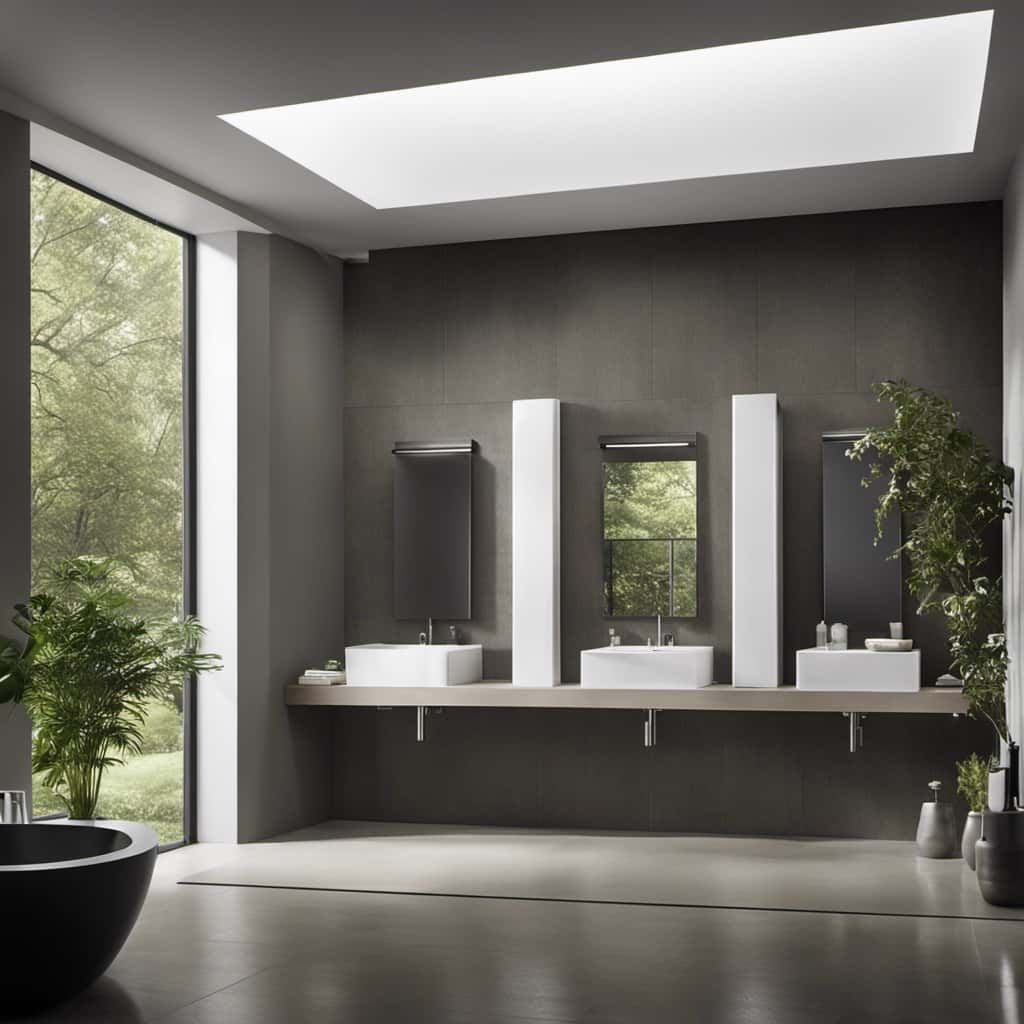
Repeating the process is particularly useful when dealing with stubborn clogs or if the toilet isn’t flushing properly due to low water levels.
Exploring alternative methods for water conservation in the bathroom, such as using a bucket of water to flush the toilet, can help reduce water consumption and contribute to environmental sustainability.
Frequently Asked Questions
How Much Water Should I Pour Into the Toilet Bowl When Using a Bucket?
When using a bucket to flush the toilet, pour enough water into the bowl to create a forceful flow, ensuring a proper flush. This alternative method of flushing is effective for toilet bowl cleaning.
Can I Use Any Type of Bucket to Flush the Toilet?
Yes, any sturdy bucket can be used to flush a toilet. However, it is important to consider the size and shape of the bucket for efficient water flow. Alternatives to using a bucket include using a plunger or calling a plumber.
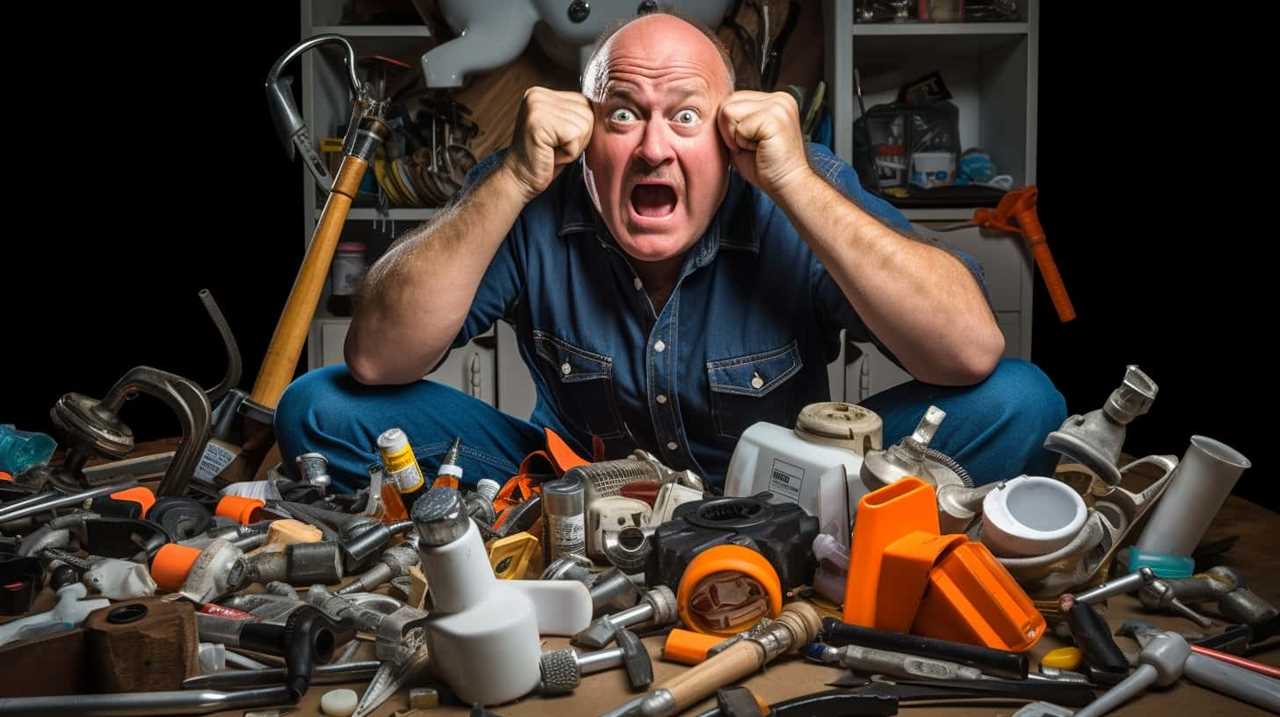
What Should I Do if the Water Level in the Bowl Does Not Decrease After Pouring in the Bucket of Water?
If the water level in the bowl doesn’t decrease after pouring in the bucket of water, there are alternative methods to try. Check the flapper, fill valve, and flush handle for issues. Troubleshooting tips can help resolve the problem.
Is There a Specific Technique or Angle at Which I Should Pour the Water Into the Toilet Bowl?
To achieve optimal results when using a bucket to flush a toilet, it is crucial to master the technique of pouring water. The angle at which the water is poured can greatly impact the effectiveness of the flush.
Can I Use a Plunger Before Pouring the Bucket of Water Into the Bowl if the Toilet Is Clogged?
Yes, using a plunger before pouring the bucket of water into the bowl is a common and effective method for unclogging a toilet. It can help dislodge the blockage and allow the water to flush properly.
Conclusion
In conclusion, flushing the toilet with a bucket of water is a simple and effective solution when faced with a broken or faulty toilet.
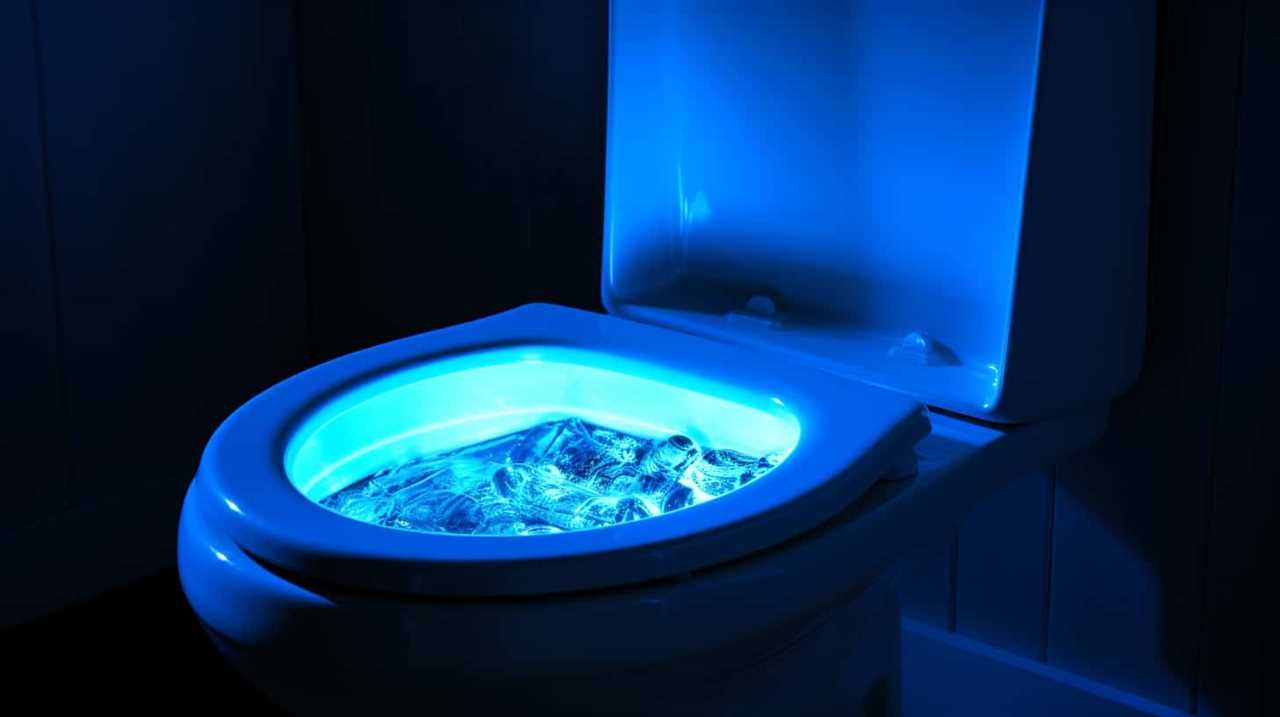
By following the steps outlined in this article, anyone can successfully flush the toilet using this alternative method.
With the sound of rushing water and the satisfaction of a clean and refreshed bathroom, this technique provides a practical and efficient solution to any toilet malfunction.
With an impeccable eye for detail and a passion for bathroom-related, Ava leads our editorial team gracefully and precisely.
Under her guidance, Best Modern Toilet has flourished as the go-to resource for modern bathroom enthusiasts. In her free time, you might find Ava exploring antique shops and looking for vintage bathroom fixtures to add to her collection.
Guides
Can You Flush Toilet if Water Turned off

Do you find yourself in a state of panic because the water has been shut off and you urgently need to flush the toilet? Have no fear! We have the answer to your plumbing problem.
In this article, we’ll explore alternative methods for flushing toilets when the water is turned off. From using a bucket of water to utilizing a trash bag filled with water, we’ll guide you through emergency options that will keep your bathroom functioning smoothly even during water outages.
Prepare to master the art of flushing without water!
Key Takeaways
- Gravity-flush toilets do not rely on electricity or water pressure to function and will continue to work during a water outage as long as there’s water in the tank.
- Alternative methods for flushing toilets without water include using a bucket flush, greywater recycling, composting toilets, waterless urinals, and dual-flush toilets.
- Using a bucket of water can effectively maintain toilet hygiene during a water outage, and pouring the water quickly and forcefully into the toilet bowl creates enough pressure for a successful flush.
- In emergency situations with water outages, options for flushing toilets include using water from nearby sources like ponds or streams, stored rainwater or melted snow, clean swimming pool or hot tub water, portable or chemical toilets, or storing water in large containers for easy access.
Gravity-Flush Toilets and Water Outages
Our gravity-flush toilet’s functionality during water outages is essential for our household. Gravity-flush toilets operate by using the force of gravity to remove waste from the bowl. This makes them ideal for situations where water supply is limited or unavailable.
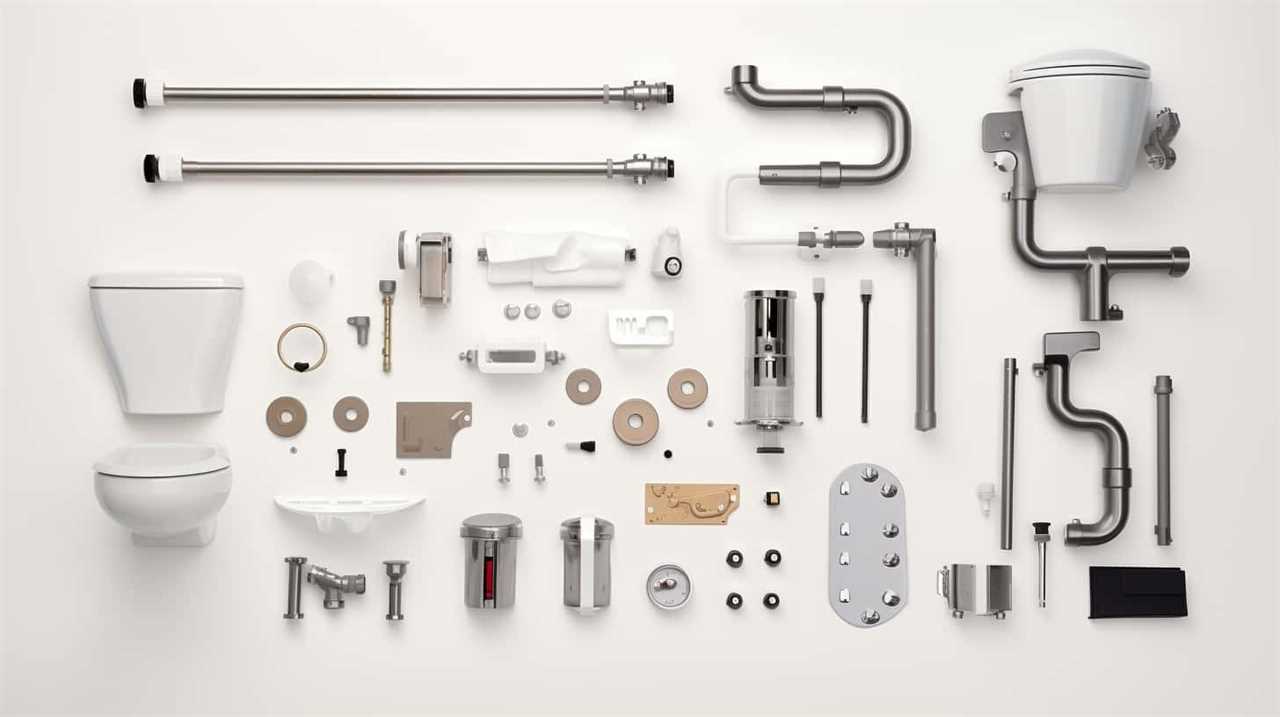
One of the benefits of a gravity-flush toilet is that it doesn’t rely on electricity or water pressure to function. This means that even during a water outage, the toilet will continue to work as long as there’s water in the tank.
To prepare for a water outage, it’s important to ensure that the toilet’s tank is filled with water. This can be done by filling a container with water and pouring it into the tank.
Alternative Methods for Flushing Toilets Without Water
To continue the discussion from the previous subtopic, let’s explore alternative methods we can use to flush toilets without water. When faced with a water outage or a desire to conserve water, there are a few toilet flushing alternatives and water-saving toilet options to consider:
- Bucket Flush: Fill a bucket with water from a nearby source and pour it directly into the toilet bowl. This will create the necessary force to flush waste away.
- Greywater Recycling: Install a greywater recycling system that diverts water from sinks, showers, and laundry to be used for toilet flushing. This sustainable solution reduces water usage without compromising sanitation.
- Composting Toilets: Consider using a composting toilet, which uses little to no water. These toilets break down waste into compost that can be safely used as fertilizer.
Using a Bucket of Water to Flush the Toilet
Let’s continue exploring alternative methods for flushing toilets without water by discussing the use of a bucket of water.

When faced with a water outage, using a bucket of water can be an effective solution to maintain toilet hygiene. Compared to a plunger, a bucket of water is generally more effective for flushing toilets without water. By pouring a bucket of water directly into the toilet bowl, the force of the water can help push waste down the drain. It’s important to pour the water quickly and forcefully to create enough pressure for a successful flush.
During a water outage, it’s crucial to conserve water. Some tips for conserving water include using the least amount of water necessary to flush, limiting other water usage, and considering alternative sanitation options if available.
Utilizing a Trash Bag Filled With Water as a Temporary Flush
We can use a single trash bag filled with water as a temporary solution for flushing the toilet when the water is turned off. This DIY toilet flushing method can be a lifesaver in emergency situations or during water shortages. Here are three reasons why this temporary flush solution is worth considering:
- Convenience: A trash bag filled with water can easily be obtained and stored, making it a convenient solution for flushing the toilet when there’s no running water available.
- Efficiency: By using a trash bag filled with water, you can quickly and effectively flush the toilet without the need for complicated setups or expensive equipment.
- Versatility: This temporary flush solution can be used in various scenarios, such as during camping trips, power outages, or when the water supply is disrupted due to repairs or natural disasters.
Emergency Options for Flushing Toilets During Water Outages
During a water outage, one of the emergency options for flushing toilets is by utilizing alternative water sources. It is important to maintain toilet hygiene and prevent toilet odors during water outages. Here are some emergency options for flushing toilets:
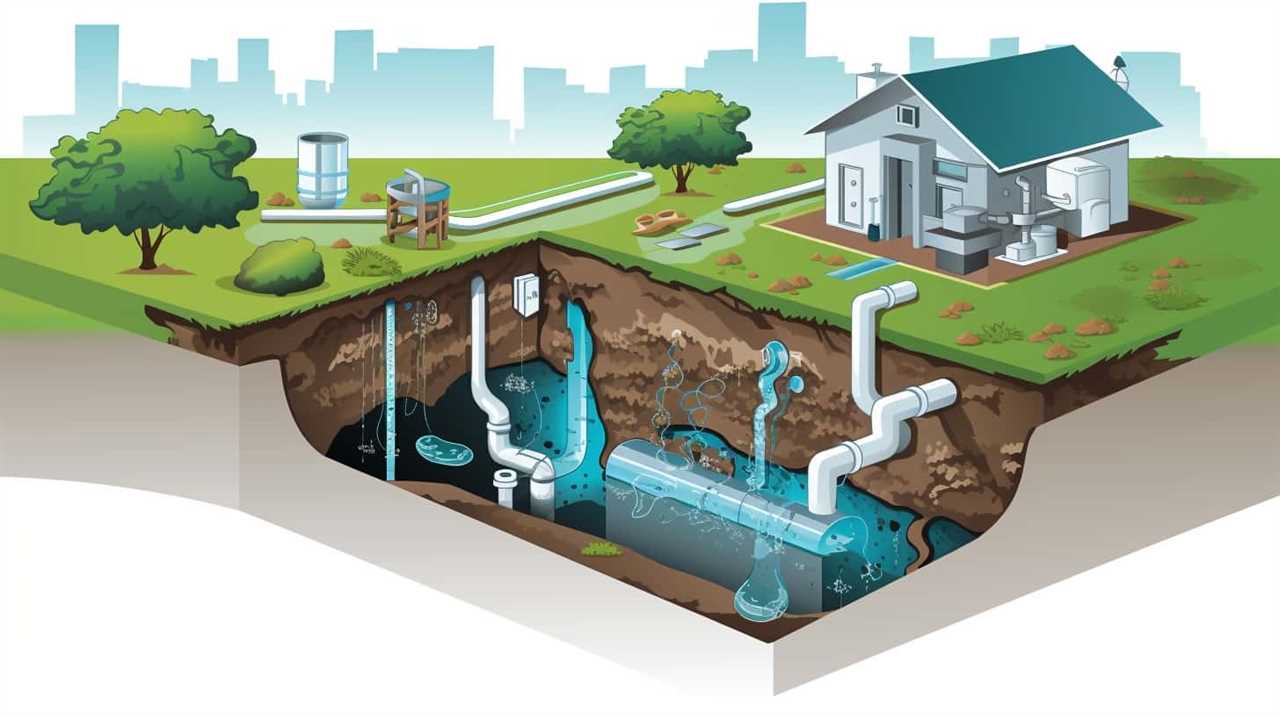
| Option | Description |
|---|---|
| Option 1 | Fill a bucket with water from a nearby pond or stream. Pour the water directly into the toilet bowl, aiming for the back of the bowl to create a forceful flush. Repeat if necessary. |
| Option 2 | Use stored rainwater or melted snow as an alternative water source for flushing. Collect and store water in large containers for easy access during emergencies. Use a cup or a small bucket to pour the water into the toilet bowl. |
| Option 3 | If available, use water from a swimming pool or hot tub. Ensure the water is clean and free from chemicals or contaminants. Use a bucket or a cup to pour the water into the toilet bowl, flushing it down. |
Frequently Asked Questions
Can I Use a Plunger to Flush the Toilet if the Water Is Turned Off?
Yes, we can use a plunger to flush the toilet if the water is turned off. It’s one of the alternative flushing methods and a DIY emergency toilet solution.
What Should I Do if I Don’t Have a Bucket Available to Flush the Toilet During a Water Outage?
If water is turned off, we must find alternative flushing methods. In the absence of a bucket, we can utilize DIY toilet flush solutions. These solutions will ensure efficient flushing during a water outage.
Is It Safe to Use Rainwater or Water From Other Sources to Flush the Toilet During a Water Outage?
Yes, it is safe to use rainwater or water from other sources to flush the toilet during a water outage. However, there are pros and cons to consider. Rainwater may be contaminated, while stored water may have limited supply.
Can I Use Bleach or Other Cleaning Agents in the Bucket of Water to Sanitize the Toilet Before Flushing?
Yes, you can use bleach or other cleaning agents in the bucket of water to sanitize the toilet before flushing. However, it is advisable to use vinegar instead of bleach as a safer alternative. Additionally, there are alternatives to using a plunger for flushing the toilet.
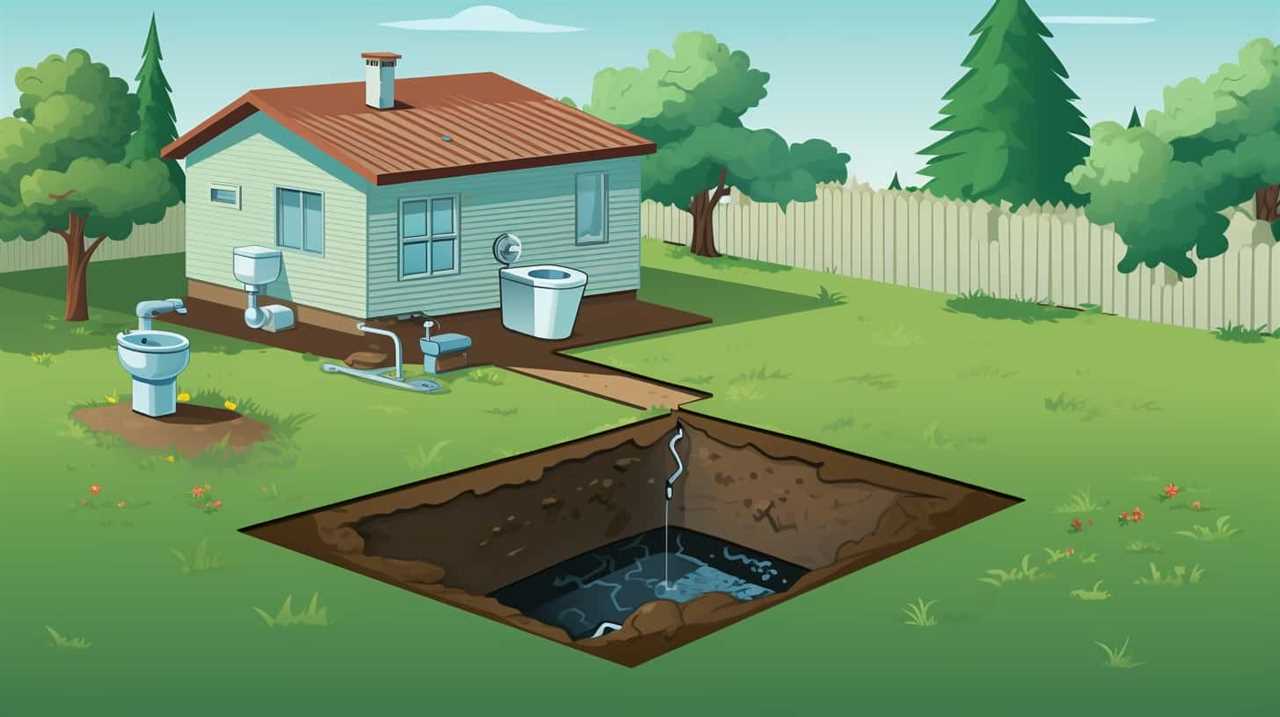
Are There Any Long-Term Solutions or Devices Available to Prevent Toilet Flushing Problems During Water Outages?
Long-term solutions and devices are available to prevent toilet flushing problems during water outages. These options ensure continued functionality by utilizing alternative water sources or implementing water-conserving technologies.
Conclusion
In conclusion, when faced with a water outage, fear not, for there are alternative methods to flush the toilet! Whether it’s using a trusty bucket of water or getting creative with a water-filled trash bag, you can still maintain your bathroom dignity.
And in dire emergencies, well, let’s just say you might’ve to get a little creative. Just remember, where there’s a will, there’s a way to keep the flush flowing!
With an impeccable eye for detail and a passion for bathroom-related, Ava leads our editorial team gracefully and precisely.
Under her guidance, Best Modern Toilet has flourished as the go-to resource for modern bathroom enthusiasts. In her free time, you might find Ava exploring antique shops and looking for vintage bathroom fixtures to add to her collection.
-

 FAQ - Advanced Bathroom Queries3 months ago
FAQ - Advanced Bathroom Queries3 months agoWhat Happens if You Sit on the Toilet Too Long
-

 FAQ - Advanced Bathroom Queries3 months ago
FAQ - Advanced Bathroom Queries3 months agoWhy Is My Toilet so Loud When Refilling
-

 Guides3 months ago
Guides3 months agoTroubleshooting Dropping Water Level in Toilet Bowl: Causes and Solutions
-

 Toilet Brands3 months ago
Toilet Brands3 months agoCountries Where You Can’t Flush Toilet Paper
-

 Guides3 months ago
Guides3 months agoChoosing the Right Toilet Flange: A Comprehensive Guide
-

 Guides3 months ago
Guides3 months agoToilet Water Supply Line Sizes: Finding the Right Fit
-

 FAQ - Advanced Bathroom Queries3 months ago
FAQ - Advanced Bathroom Queries3 months agoWhat Happens When You Put Baking Soda in Your Toilet
-

 Guides3 months ago
Guides3 months agoHow to Remove Crystallized Urine From Toilet Bowl






















